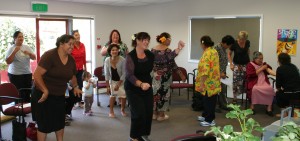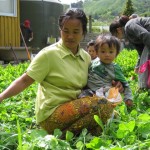




Sustaining Victory
Kindra writes about her time at Victory Community Centre in Nelson.
30th May, 2016
I’ve been Director at Victory Community Centre for 8 years now, since our inception and the almost 3 years leading to it being here.Over time we’ve transformed ourselves into a thriving community where people feel connected to a wide range of services and support, especially our own Be Well Community Nurse Penny, a programme of fun, social and recreational opportunities, and we’ve established a community garden with support from DHB and their Nutrition and Physical Activity Plan. We have adapted the projects and initiatives to ensure that we can sustain the momentum.
Some days the work does generate the feelings “how do we keep going, when it feels we are swimming against the tide with funding”, and “are we really making any difference?” So what has and does sustain our organisation, our CSO (Civil Society Organisation)?
We have been blessed by having really stable, highly professional staff with an appreciation of the strategic relationships to support the vision and mission of Victory Village as well as genuine and high capacity for the day to day realities – i.e. not afraid to muck in with whatever it takes. This staffing quality and stability has enabled continuity of care and a sense of genuine relationship building.
Our first three employees have been here for the duration – we are now a team of five part-timers. Recruitment and retention is a big factor in sustainability. The approach I take as Director is closely supported by a particular philosophical approach with managing the centre. I actively work in terms of staff with the SCARF model. Short version of this model: It articulates our social needs at work, which I believe if met, contribute to stability and sustainability of the staff. SCARF stands for Status; Certainty; Autonomy; Relatedness; Fairness. (Check it out in more detail here.) If we actively discuss ways to meet these needs, and structure the job descriptions and systems of our work, and our ways of working as individuals and teams accordingly, then these needs will be met.
The second big factor for sustainability is financial stability. I use what is called the “6 -7 Key Streams” model. I learned this from Kerri Tilby-Price at an Exult workshop. As a financial manager, all income is coded into 6 or 7 streams (the 7th is membership, and some organisations don’t work on that basis). I code all income and expenditure so that we can track where and what, comes and goes. Using that as a percentage of all income, it becomes visible where the potential lies to bring better balance into all the streams. Relatively simple, and yet very effective from my experience and creates some clear targets and focus for activity in our organisation.
I am keenly aware that the third main contributor to sustainability is about relationships. A colleague once said “The currency of business is money and profit. The currency of CSO’s is relationship”. Every relationship we have, whether it’s to support us, or for us to support others, contributes to our vision and mission. And every one of them falls into all or part of the continuum:
Partnership – Collaboration – Cooperation – Networking – Co-existence
With some organisations, like our relationship to the school here, we actively work across the whole continuum. Being clear on where on the continuum this piece of work is occurring helps establish the nature of the relationship. It may be that you want to move a relationship from networking, to becoming partners. What will help that happen, and why, are good things to clarify before you invest time and energy.
The last factor that I believe contributes to sustaining momentum is being open to opportunities. Being welcoming, warm, nimble and accessible to people and their contributions, can be game changers on a day. Being willing in the moment to say “YES” to offers of support or connection, and then figuring out the “how and when” is generally our first response. So being willing to take a manageable risk given your experience and intuitive sense of how much you can trust a new relationship or connection, can take your organisation into new and exciting opportunities that we might not have considered. This generates creativity, and possibility and keeps hope alive.
By Kindra Douglas
There’s a lot more about Victory Village at the following links:
Watch Kindra talk about the SCARF model in the 3rd module of our At the Heart Resources.
Our Door is Always Open – At The Heart Module 4 video.
A collection of information from the 2011 Victory Village Forum.



